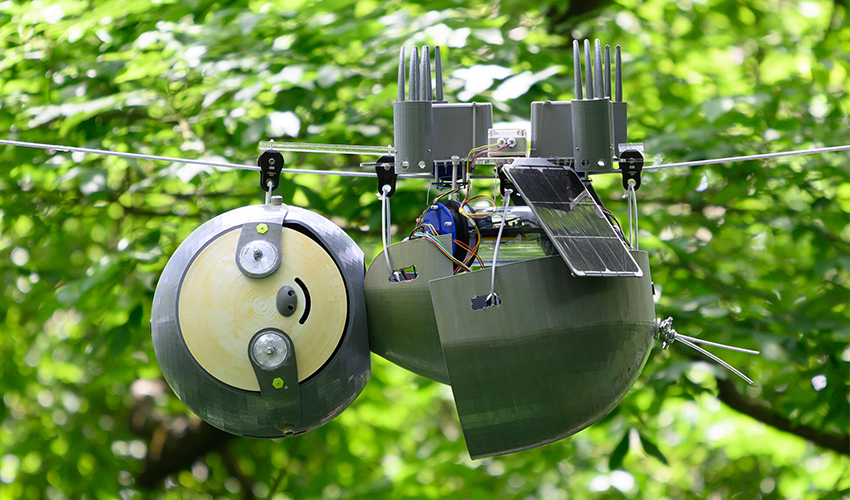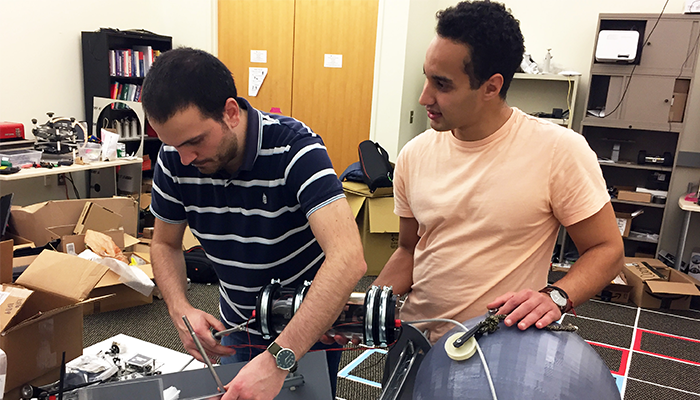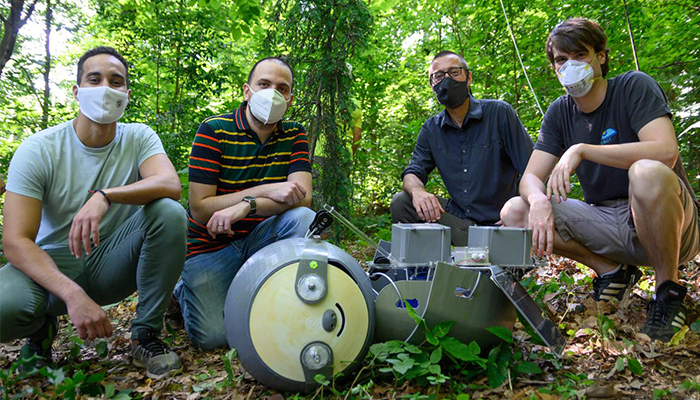3D printed SlothBot to preserve biodiversity

The development of 3D-printed robots is no longer a novelty. Previously, we wrote about different 3D printed robots, which have a wide range of applications. Recently, students from Georgia Tech (School for Electrical Engineering and Information Technology), Gennaro Notomista and Yousef Emam, under the supervision of their professor Magnus Egerstedt have developed an extraordinary robot. The robot in question is SlothBot, which is partly additively manufactured. What are the characteristics of this robot and in which areas should it be used?
The development of SlothBot started in 2019. As the name implies, the robot is based on its animal model. The resemblance with an actual sloth can be seen not only in the design, but also in the robot’s slow mode of locomotion. The inspiration came to Professor Egerstedt while he was traveling in Costa Rica, during the trip he saw the animals climbing on a rope. The SlothBot was developed with the aim of measuring temperature fluctuations and carbon dioxide to protect endangered plants and animals.
It quickly became clear during the development stage that the robot would have to withstand long-term weather fluctuations. As a solution, the researchers used 3D printing, more specifically an FFF 3D printer, to manufacture a cover that would protect the electronics. One of the advantages of 3D printing lies in the freedom of design – since the SlothBot will be used in places where visitors are present, the goal is for the robot not to be perceived as a nuisance. An even greater advantage, however, is the weight reduction made possible by 3D printing. After all, the SlothBot will be powered by solar cells, thus, it should be as energy-efficient as possible.
Steve W. Chaddick of Georgia Tech School explains the specifics of SlothBot development as follows: “This is not the way robots are normally developed today, but if SlothBot is slow and energy efficient, it can linger in the environment to observe what we can only see if we are present for months or even years without interruption.”

Yousef Emam and Gennaro Notomista assemble the SlothBot in the office of professor Egerstedt for the first time.
Applications of the SlothBot
The SlothBot is already being used in a botanical garden in Atlanta. There it moves along a taut rope that is almost 30 meters long. In the future, the SlothBot should be able to monitor forest areas of up to 30 hectares. For this purpose, only some additional lanes will have to be set up. The idea is that the robot will stay put most of the time, and move only when measurements of temperature and carbon dioxide are to be taken.
The measurements should help to better understand the environment and protect endangered plants and animals. Mr Coffey, the owner of the botanical garden, adds “With the rapid loss of biodiversity and the potential extinction of more than a quarter of the world’s plants, SlothBot offers a great opportunity to work towards the conservation of the rare species.”

In the long term, more robots will be used to monitor forests or even agricultural lands in order to make observations that will help prevent pest infestation. Further information about the project can be found here.
What do you think of this innovative robot? Let us know in a comment below or on our Facebook and Twitter pages! And remember to sign up for our free weekly Newsletter, to get all the latest news on progress, research and more entrepreneurs in 3D printing send straight to your inbox!






